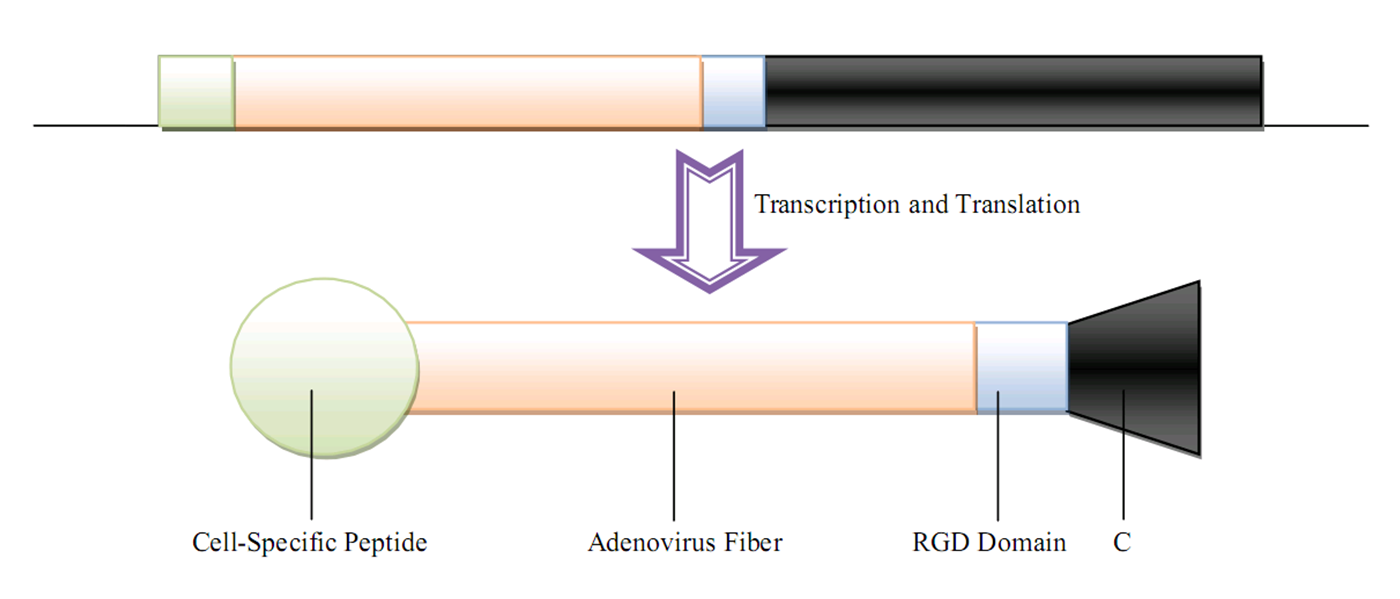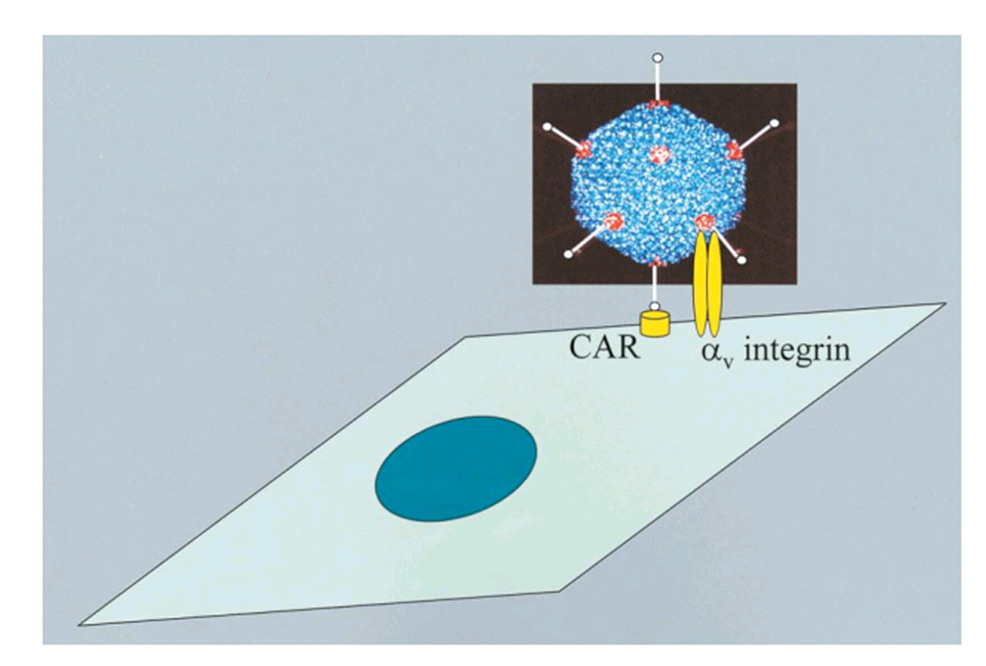Team:Tsinghua/Design3
From 2009.igem.org
(→Functioning of the Targeted Gene Therapy Vector) |
GuoQiangChen (Talk | contribs) (→Functioning of the Targeted Gene Therapy Vector) |
||
| (6 intermediate revisions not shown) | |||
| Line 1: | Line 1: | ||
| + | {{Tsinghua/ProjectHeader}} | ||
| + | |||
| + | |||
=Synthesis of the Targeted Biobrick= | =Synthesis of the Targeted Biobrick= | ||
| - | The synthesized genome will be capable of producing gene therapy " | + | The synthesized genome will be capable of producing gene therapy "virions" with protein C specially modified. This targeted biobrick enables the synthetic gene therapy vector to be targeted specifically for certain types of cells. We generally decouple this biobrick into four "modules" (will be expressed to different domains in the C-Fiber fusion protein). |
| - | [[Image:TargetConstruct.png| | + | [[Image:TargetConstruct.png|600px|center|thumb|Synthesis of Targeted Biobrick]] |
| - | =Functioning of | + | =Functioning of Targeted BioBrick in GenSniper Infection= |
An idealized model for the functioning of the targeted GenSniper is proposed as follows. After the injection of the purified gene therapy vectors, the vectors will conveyed to target cells by circulation (specific situations should be discussed with respect to different types of cells and different diseases). The synthetic vectors will invade into the target cells in a manner similiar to the wildtype adenovirus-attachment and internalization. This function is empowered by the targeted biobrick in the synthetic genome. | An idealized model for the functioning of the targeted GenSniper is proposed as follows. After the injection of the purified gene therapy vectors, the vectors will conveyed to target cells by circulation (specific situations should be discussed with respect to different types of cells and different diseases). The synthetic vectors will invade into the target cells in a manner similiar to the wildtype adenovirus-attachment and internalization. This function is empowered by the targeted biobrick in the synthetic genome. | ||
| Line 11: | Line 14: | ||
This GenSniper delivery model is the simulation of wildtyoe adenovirus infection to human cells. This process can be divided into two steps: attachment and internalization. In adenovirus, attachment is accomplished by the interaction between fiber knob and CAR (a widely distributed cell receptor), while internalization is ensured by the interaction between RGD domain on adenovirus viroin and integrin on the cell surface. In our synthesized GenSniper, the attachment is accomplished by the interaction between cell-specific peptide generated by phage display and cell specific receptors, while internalization is also ensured by the interaction between RGD domain on adenovirus viroin and integrin on the cell surface. | This GenSniper delivery model is the simulation of wildtyoe adenovirus infection to human cells. This process can be divided into two steps: attachment and internalization. In adenovirus, attachment is accomplished by the interaction between fiber knob and CAR (a widely distributed cell receptor), while internalization is ensured by the interaction between RGD domain on adenovirus viroin and integrin on the cell surface. In our synthesized GenSniper, the attachment is accomplished by the interaction between cell-specific peptide generated by phage display and cell specific receptors, while internalization is also ensured by the interaction between RGD domain on adenovirus viroin and integrin on the cell surface. | ||
| - | [[Image:Target.png|520px|center| | + | [[Image:Target.png|520px|center|thumb|Infection mechanism for the targeted GenSniper]] |
| - | [[Image:AdTarget.png|520px|center| | + | [[Image:AdTarget.png|520px|center|thumb|Infection mechanism for the non-targeted adenovirus]] |
Latest revision as of 23:51, 21 October 2009
| Home | Background | Brainstorming | Design | Experiment | Results | Conclusion | Protocol |
|---|
Synthesis of the Targeted Biobrick
The synthesized genome will be capable of producing gene therapy "virions" with protein C specially modified. This targeted biobrick enables the synthetic gene therapy vector to be targeted specifically for certain types of cells. We generally decouple this biobrick into four "modules" (will be expressed to different domains in the C-Fiber fusion protein).
Functioning of Targeted BioBrick in GenSniper Infection
An idealized model for the functioning of the targeted GenSniper is proposed as follows. After the injection of the purified gene therapy vectors, the vectors will conveyed to target cells by circulation (specific situations should be discussed with respect to different types of cells and different diseases). The synthetic vectors will invade into the target cells in a manner similiar to the wildtype adenovirus-attachment and internalization. This function is empowered by the targeted biobrick in the synthetic genome.
Firstly, the tissue-specific peptide (selected by phage display) on the surface of the viroin will attach to the receptors on the surface of the target cells. Secondly, the RGD domian at the bottom of the engineered fiber will interact with integrin of the targeted cells, thus internalize the whole viroin by endocytosis.
This GenSniper delivery model is the simulation of wildtyoe adenovirus infection to human cells. This process can be divided into two steps: attachment and internalization. In adenovirus, attachment is accomplished by the interaction between fiber knob and CAR (a widely distributed cell receptor), while internalization is ensured by the interaction between RGD domain on adenovirus viroin and integrin on the cell surface. In our synthesized GenSniper, the attachment is accomplished by the interaction between cell-specific peptide generated by phage display and cell specific receptors, while internalization is also ensured by the interaction between RGD domain on adenovirus viroin and integrin on the cell surface.
 "
"


